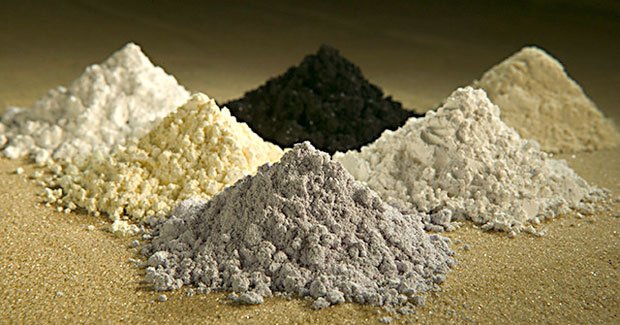Deep-sea mud source of ’21st-century gold’

CHINA’S MONOPOLY OVER rare-earth metals could be challenged by the discovery of massive deposits of these high-tech minerals in mud on the Pacific floor, a new study suggests.
China accounts for 97 per cent of the world’s production of 17 rare-earth elements, which are essential for electric cars, flat-screen TVs, iPods, superconducting magnets, lasers, missiles, night-vision goggles, wind turbines and many other advanced technologies.
These elements carry exotic names such as neodymium, promethium and yttrium but despite their ‘rare-earth’ tag are in fact abundant in the planet’s crust. The problem, though, is that land deposits of them are thin and dispersed, so sites that are commercially exploitable or not subject to tough environment restrictions are few.
As a result, the 17 elements have sometimes been dubbed ’21st-century gold’ for their rarity and value. Production of them is almost entirely centred on China, which also has a third of the world’s reserves. Another third is held together by former Soviet republics, the United States and Australia.
Extraordinary concentration
But a new study, published on Sunday in the journal Nature Geoscience, points to an extraordinary concentration of rare-earth elements in thick mud at great depths on the Pacific floor.
“It’s early days now but it’s a new frontier,” Dr Ralph Hackl of the CSIRO’s Minerals Down Under unit told Australian Geographic. “A potential advantage with these deposits is that if you can get them to the surface and to a land-based processing plant, they probably won’t require significant crushing and grinding. They are sediments and should be fine enough to leach directly and they seem to respond well to conventional acid leaching techniques. One challenge with conventional mining is the high energy cost associated with crushing and grinding the ore fine enough to extract the valuable metals.”
Japanese geologists studied samples from 78 sites covering a major portion of the centre-eastern Pacific between 120 and 180 degrees longitude. Drills extracted sedimentary cores to depths that in places were more than 50 m below the sea bed. More than 2000 of these cores were chemically tested for content in rare-earth elements.
The scientists found rich deposits in samples taken more than 2000km from the Pacific’s mid-ocean ridges.
The material has taken hundreds of millions of years to accumulate, depositing at the rate of less than half a centimetre per thousand years. They were probably snared by action with a hydrothermal mineral called phillipsite.
At one site in the central North Pacific, an area of just one square kilometre could meet a fifth of the world’s annual consumption of rare metals and yttrium, says the paper.
Lab tests show the deposits can be simply removed by rinsing the mud with diluted acids, a process that takes only a couple of hours and, say the authors, would not have any environmental impact so long as the acids are not dumped in the ocean.
Question of recovery
A bigger question is whether the technology exists for recovering the mud at such great depths – 4000m to 5000m – and, if so, whether this would be commercially viable.
Lead author Yasuhiro Kato, a professor of economic geology and geochemistry at the University of Tokyo, said the response from mining companies was as yet unknown, “because nobody knows the presence of the (rare-earth) -rich mud that we have discovered.”
“I am not an engineer, just a geoscientist,” Yasuhiro said. “But about 30 years ago, a German mining company succeeded in recovering deep-sea mud from the Red Sea. So I believe positively that our deep-sea mud is technologically developable as a mineral resource.”
The market for rare-earth elements has tightened considerably over the past couple of years. China has slashed export quotas, consolidated the industry and announced plans to build national reserves, citing environmental concerns and domestic demand.
These moves led to a fall of 9.3 per cent in China’s exports of rare-earth metals last year, triggering complaints abroad of strategic hoarding and price-gouging.
“More than 95 per cent of production comes from China, and they’ve dramatically cut back on their exports for a number of reasons,” says Ralph of the CSIRO. “So it’s spurred a surge in activity to start up new rare earth mining and processing operations elsewhere.”
RELATED STORIES
Mining could drain Queensland aquifer
Is mining trampling on Aboriginal culture?
WA quake may have been man-made

